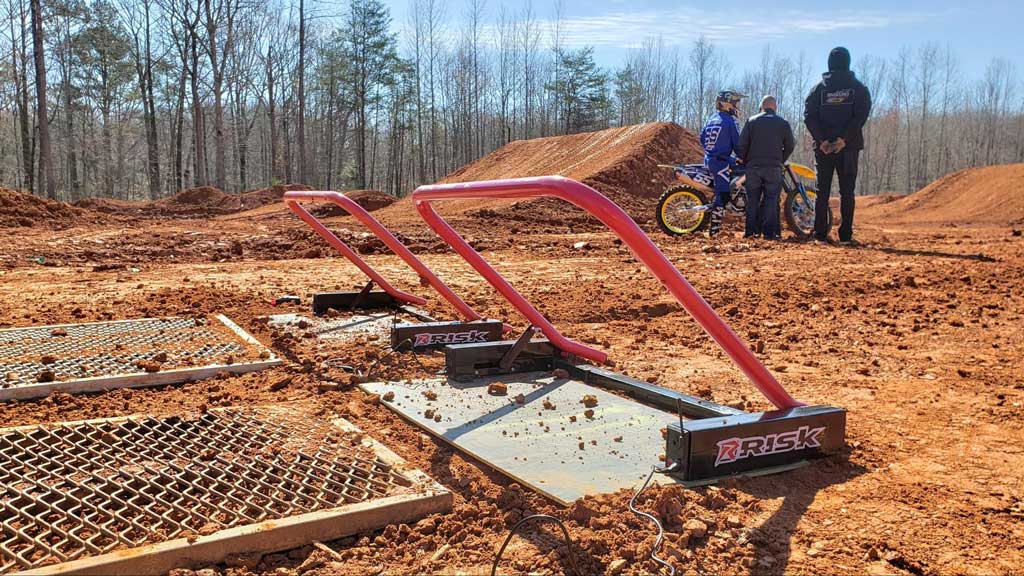Your Cart is Empty
MOTO Products
shop your way
Choose a shopping experience
Same great Risk Racing products, 3 completly different ways to shop them.
Choose a shopping experience
Same great Risk Racing products, 3 completly different ways to shop them.
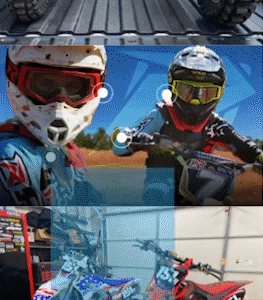
Lifestyle Shopping
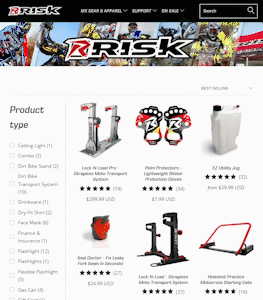
eComm Shopping
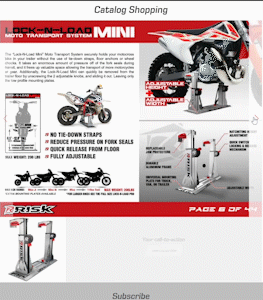
Catalog Shopping
MOTO TYRES
MOTO Gear & Apparel
Motocross Track Guide - Terms, Layouts, and Obstacles
October 13, 2020 10 min read
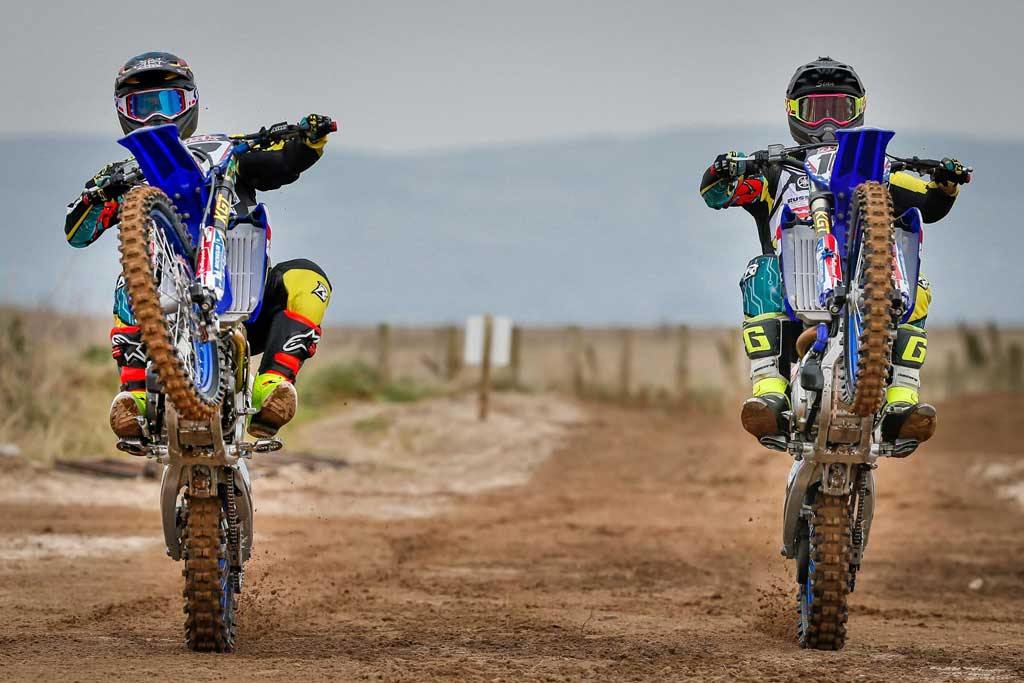
So you are thinking about hitting the track, but you’ve only taken your dirt bike trail riding? We want this article to give you accurate expectations so that when you pull onto the track from the pits you don’t get run off the course.
This guide will help you understand the parts and pieces that make up a motocross track. It will cover the rules, guidelines, and expectations so that you will be a safe rider and keep everyone else around you safe.
At this point, you are past just being curious and want to know your stuff when it comes to motocross, so let’s dive in.

What's a Motocross Track
Motocross is an outdoor action-adventure sport that takes place on dirt tracks that are 1-3 miles in length. These tracks are full of extreme terrain changes making for very exciting racing conditions.
Motocross (or MX) tracks are full of turns, jumps, drops, step up’s, step down’s, with or with-out the whoops, and each of these obstacles has an ideal scenario in which to get through the quickest. Some of the fastest lines require taking the biggest risks.
Motocross Track Guide
This MX Track guide is meant to not only teach you what the different parts of the track are, but also what to do when you encounter each one. So let’s start with a list of all the different parts of a motocross track to start getting some understanding.
Motocross Starting Gate
This is absolutely one of the most crucial parts of the race. If you consider just those first few seconds you are essentially drag-racing a field of other riders into the first corner. In drag racing, how well you start is in direct correlation with how well you finish. The same applies to the start of an MX race as the first few people that lead the pack into that first corner tend to hold that lead for the rest of the race.
Beating the pack into the first corner is called getting the holeshot. This is absolutely one area that can be improved with repetitive practice. Some areas to consider are your body positioning, your clutch and throttle control, and where to keep your attention.
If you want to practice your moto starts then I highly recommend getting your ownstarting gate to put in the time and hone your take-off skills. Risk Racing makes a gate appropriately named the holeshot as that’s exactly what it lets you work on. This gate lets you practice with the same conditions as an actual race making for a great training tool. The race gate features randomized timers that can be started with a handlebar-mounted wireless controller.
The Holeshot Race Gate also lets you hook up multiple holeshot gates together for a true racing experience against other riders or as a double gate for ATV race practice.
MX Starting Gate Tips
Body Positioning - You want to be standing just in front of the footpegs so that your weight favors the front of the bike. Elbows out, chest forward.
Timing - To achieve the fastest start you are ideally launching your front tire out in an arch just over a starting gate bar that is still falling to the ground.
Practice - Get a practice race gate and work on your holeshots.

MX Track Turns
Motocross tracks are some of the most unique racing courses out there. No two look exactly the same even though they all feature a handful of the same features listed above. That’s because the turns of a track can make for some huge variation in the shape and feel of the track.
Turns control the pace of that section of the track. Some turns have a berm which means dirt has been used to build up the outside of the banked turn. These can be maneuvered with much more speed than a regular turn.
Turns are notorious for having heavy ruts making it important to pick a line in the corner and stick to it.
MX Turning Tips
Leaning - How fast you go around the corner, how much power you give the bike, and how hard you lean are all tied together.
If you were leaning over really far in the corner you're going to have to give it some serious gas to get back up out of there.
Weight Distribution - Coming into a corner you need to put your weight as far back on the seat as you can as you'll be locking up the brakes in an effort to slow down for the corner.
As you hit the actual turn you move your weight all the way up to the front of the seat practically onto the gas tank and put your inside leg out forwards, but up high.
Now your weight is very far forward on the bike so when you start coming out of the corner you can give the bike everything it's got and launch out of the turn.
Motocross Track Jumps
Jumps come in many different shapes and sizes, some making for an amazing aerial show.
|
|
|
|
|
|
|
|
|
|
|
Hitting jumps at the track is something that you can build skills towards. It’s easy on paper or on TV as they’ve all put in the time but you can start by just getting comfortable with the feeling of going up and over a single jump. After you get used to that feeling you are naturally going to want to hit it faster and faster.
Ideally, the next progression would be to find a tabletop that you can now practice getting some air time with. A table top’s design is essentially a large jump with the top cut off or another way to picture it is two or more jumps in a row with the valleys filled in with dirt. This gives you a jump up onto a flat surface and then a ramp down to the ground.
This is ideal for beginners as the tabletop gives you somewhat of a ‘net’ as you work up your skills, confidence, and courage up to being able to clear the tabletop. After you can successfully hit the jump, clear the table, and land on the decline on the other side then you can work on hitting doubles.
Doubles, triples, and quads are just what they sound like, multiples of the same jump designed to be taken as their name implies.
The whoops are a section of small repetitive jumps one after another that are more about balance and suspension then actually jumping. The rollers are a larger version of the whoops with a rounded lip making it hard to get large air. A rhythm section is multiple jumps in a row.
MX Jumping Tips
Enertia and Throttle control - When an object is in motion and no forces are acted on it, it will remain in motion even over a jump creating a steady arc. If your dirt bike hits a jump with the same power from the approach to landing you will get that same smooth arc.
If you give that same jumping dirt bike more power right at take off you run the risk of you and the bike over rotating backward or ‘looping out’. If you let off the throttle or even brake at take-off then your arc will become a nose dive into a crashing endo. Be consistent on the throttle all the way through the jump.
Stand Up - Motocross is such a demanding sport because to ride a dirt bike around these tracks at breakneck speeds you can’t just sit on the seat and twist the throttle. You have to be in somewhat of a high squat so that you can use your legs as the 3rd major piece of suspension.
If you are doing it right the bike can move around side to side and up and down underneath you as you navigate around the track and other racers. If you sat on the seat the entire time you would injure your back as your spine would be taking the impact and hitting jumps would just throw you off from the rear spring load.

Motocross Track Rules
Regardless of the track you are going to, here are some of the most common rules you will find just about everywhere.
Check-in
You can’t just show up and start riding. This isn’t your house, you need to go to the front desk/office to check-in and pay your entry fee.
Underage consent
If the racer checking in is under 18 then they will need a signed release form from a parent or guardian.
Gear
Safety is priority number one at the track so before you show up make sure your kit includes:

Motocross Track Regulations
Safety is the name of the game so things like drugs and alcohol are a show stopper. The AMA does random testing and will take away your privileges to race, fine you, and potentially ban you.
This is another highly important safety item as it concerns serious head trauma. If it's suspected by any of the medical staff or race officials that a rider has a concussion or signs of one then they definitely will not let that rider race if deemed unsafe.
Major racing events may be canceled due to hazardous weather conditions. If a thunderstorm is present the race may be postponed for a minimum of 30 minutes.

Motocross Track Etiquette
Make sure you enter the track through the designed area and the same goes for pulling off the track. Both of these scenarios require safety and attention to avoid an accident. If you are out riding the track and get frustrated about not making a jump, do not just ride off wherever. Keep yourself and everyone else around you safe by holding a consistent path and not just veering off the track whenever you want.
Especially if you are new to riding a track, try to be as consistent as possible so others can predict your riding pattern. If you are a slow rider and are cutting every corner or jumping from one side of the track to the other then you are going to get hit from behind. Try and think of the track as having multiple lanes and visually pick one and stick to it.
This is essentially holding your line in the air. It’s even more important when in the air because most jumps are taken on a leap of faith as you can’t always see the landing until you’re in the air. Well, if you jump from one side to the other and someone is behind you, you run the risk of having someone land on you. Be predictable.
If you are new, that’s okay, just be comfortable with the idea that you are going to get passed by and be around other riders.
It can be tempting to match the pace of others around you, especially if you enter the track in a large gap but then find yourself getting caught up to by another bike. You can feel pressured internally to keep that buffer of space by going faster potentially out of your comfort zone.
The best way to stay safe on the track is to just ride within your abilities and be as predictable as possible. Pick your line and stick to it. That way, more experienced riders can pass you with ease.
When you are getting started with motocross your goal shouldn’t be to go out and challenge everyone at the track to see who’s the best that day, but rather challenge yourself to get just a little bit better than last time.

Pit Etiquette
Slow down - You’re sitting on a powerful race machine and it’s fun to go fast but you need to go slow off the track to keep everyone safe.
Horseplay - This isn’t the place to practice your holeshots or your stoppies so no messing around in the pits or the parking lot.
What do the motocross flags mean?
Motocross flags are a way for track officials and safety crew to communicate with racers during the race.
|
Checker - The checkered flag indicates that the race is coming to an end at the finish line. |
White - The white flag tells racers that they are entering their last lap. |
|
Red -A red flag means a serious problem has occurred and they are stopping the race. Make your way back to the start line. |
Green - The green flag is used to start the race. Green means go! |
|
Yellow - The yellow caution flag is used to indicate a problem on the track and for riders to slow down and use caution while maintaining position. |
Black - A racer has been disqualified and needs to exit the track and see the referee. |
|
Blue w/yellow diagonal stripe - This flag is displayed as a courtesy to slower riders that are about to be overtaken by the pack leaders. If shown at the start gate, riders are to stop their engines. |
White w/ Red Cross - This flag indicates that there is safety personnel and/or vehicle out on the track. Use extreme caution and do not let the wheels of your bike leave the ground and maintain position. |
Motocross Track Terminology
Braaap - Your interpretation noise of how your bike sounds, especially if you have a 2-stroke. Can be used as just about anything in a sentence… Noun, Verb, Punctuation.
Let the Big Dog Eat - Sitting back and twisting the throttle. You are letting your bike get as much traction and power to the ground as possible.
Send it - Hitting a jump and going big with it.
Sketchy - Anything that comes really close to / or ends in a crash is sketchy.
Sick - Whatever it is, it’s good
Arm Pump - A term used to describe the pain in your arms from holding onto the handlebars that jerk back and forth repeatedly.
Battle it out - Riding neck and neck with another racer during a section of the race
Bailed - Jumping off the bike in mid-air to avoid a crash/collision.
Pinned - Holding the throttle wide open.
Casing it - If you come up short on a jump you will most likely land with the frame of your bike smashing into the lip of the jump.
Roost - The track debris that is thrown up from the back tire.
Sand Bagging - Racing under your potential to get an advantage.
Whiskey Throttle - Let go! This person is usually hanging on for dear life and inadvertently twisting the throttle harder just trying to hang on.
DNF - Did Not Finish
Clapped Out - A bike that has seen better days and needs put out to pasture.
Yard Sale - A huge crash that sends bike and rider debris everywhere.

Wrapping up
Hopefully, this guide gives you the insight you need to be comfortable navigating your way around a motocross track.
Stay safe and keep everyone on the track safe as well.
Leave a comment
Comments will be approved before showing up.
Subscribe
Sign up to get the latest on sales, new releases and more …
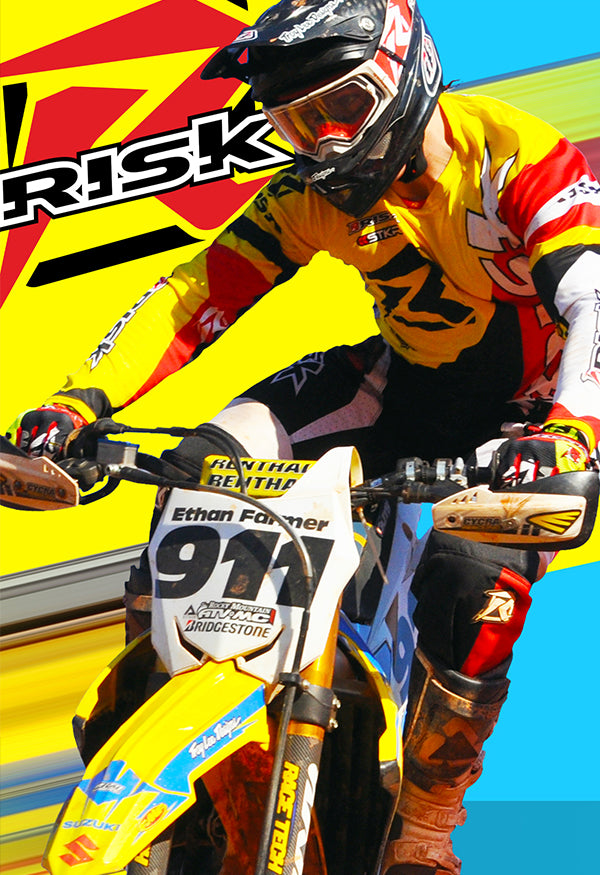
Limited Time 10% Off
Save on your 1st order and get email offers when you join.
Eligible for first-time website purchases only. Emails may take a few minutes to process and could get flagged by email providers as junk so be sure to wait a little bit and check your junk and/or spam folders.

 UK/EU▾
UK/EU▾



























